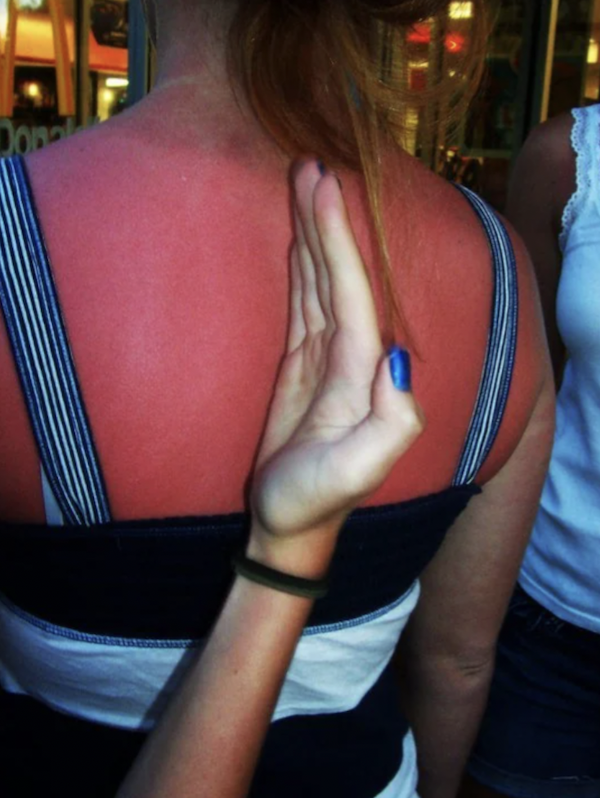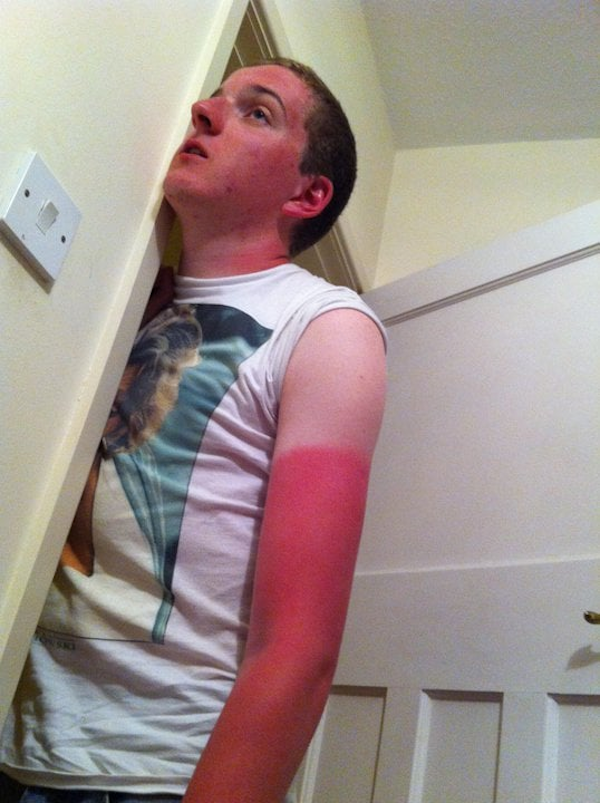The newest registered user is гераскинс
Our users have posted a total of 48009 messages in 7050 subjects

WORLD CLOCK
INFO VINE * The History of The Hasbro Toy Company *
Valley of the Sun Casual Club :: WORDS , FACTS , DATES , GAMES & TRIVIA & HISTORY :: INFORMATION VINE
 INFO VINE * The History of The Hasbro Toy Company *
INFO VINE * The History of The Hasbro Toy Company *

Photo Courtesy: [SOPA Images/LightRocket/Getty Images]
As the parent company of popular brands like Kenner and Parker Brothers and franchises like Transformers and Power Rangers, Hasbro is among the largest toy companies in the world. Its logo appears on everything from dolls and action figures to board games and water guns.
Over the years, Hasbro's numerous innovations and acquisitions have helped it expand into a multinational conglomerate. From its humble beginnings to its enduring popularity as a brand today, here is the history of the Hasbro toy company.
1923: Hassenfeld Brothers Is Founded
In 1923, Polish-Jewish immigrants Herman, Hilal, and Henry Hassenfeld founded Hassenfeld Brothers in Providence, Rhode Island. The company initially sold textile remnants but grew its operations later in the decade, producing hat liners and school supplies like pencil boxes.

Photo Courtesy: [Payton Chung/Wikimedia Commons]
Interestingly, the first eight employees at Hassenfeld Brothers were all family members. By the Great Depression, the company's workforce had grown to 200 people. Furthermore, it was now bringing in $500,000 every year from the sales of its products.
1926: Hassenfeld Brothers Is Incorporated
Just three years after its founding, Hassenfeld Brothers became incorporated in 1926. Henry Hassenfeld assumed control of the company after his younger brother Hilal began to work in another textile business.

Photo Courtesy: [William Mills & Sons/Wikimedia Commons]
Henry Hassenfeld became regarded as something of a father figure within the company. Despite this, he developed a reputation as a tough and shrewd businessman. Henry's son, Merrill, joined the company after graduating from the University of Pennsylvania in 1938, eventually becoming its president.
1935: Hassenfeld Brothers Begins Manufacturing Pencils
Hassenfeld Brothers entered the pencil-making business in 1935 after years of making pencil boxes and cloth pouches with zippers for school supplies. When the company's pencil supplier raised its prices, Henry Hassenfeld decided that the company would begin producing its own.

Photo Courtesy: [Hulton Deutsch/Corbis Historical/Getty Images]
The decision to make pencils would prove to be a highly profitable one for Hassenfeld Brothers, creating a steady source of revenue. The company would remain in the pencil-making business until 1980 when it spun off Empire Pencil, which by then was the largest pencil manufacturer in the United States.
1942: Hassenfeld Brothers Becomes A Toy Company
Expanding beyond pencils and school supplies, Hassenfeld Brothers started making toys like modeling clay and doctor and nurse kits. To support the production of toys, the company moved into plastics, which it would later use for many of its products.

Photo Courtesy: [Contributor/AFP/Getty Images]
By 1942, Hassenfeld Brothers had become a toy company. Because of labor shortages, the number of employees decreased to just 75 people. When Hilal Hassenfeld, who had remained the company's CEO, died in 1943, Henry took his place.
1952: Hassenfeld Brothers Introduces Mr. Potato Head
Hassenfeld Brothers achieved its first notable success in the toy market with Mr. Potato Head, which debuted in 1952. Mr. Potato Head was the brainchild of George Lerner, an inventor from Brooklyn, New York, who devised the concept in the late 1940s.

Photo Courtesy: [Spencer Platt/Getty Images Entertainment/Getty Images]
Mr. Potato Head initially consisted of plastic and felt pieces, which children would attach to a real potato, and was the first toy advertised on television. The introduction of a plastic body in 1964 supplanted the need for real potatoes.
1954: Hassenfeld Brothers Becomes A Disney Licensee
Hassenfeld Brothers became a Disney licensee in 1954, marking the beginning of the company's lengthy relationship with The Walt Disney Company. Over the years, Hasbro has released toys for some of Disney's largest and most successful franchises, including Star Wars and the Marvel Cinematic Universe.

Photo Courtesy: [The Washington Post/The Washington Post/Getty Images]
Mattel, a major rival of Hasbro, held the license for the Disney Princess line until its expiration in late 2015. Due to their previous success with Star Wars, Disney invited Hasbro to become the new licensee. The first Disney Princess toys manufactured by Hasbro became available in January 2016.
1961: Hassenfeld Brothers Expands To Canada
After operating exclusively out of the United States since its founding, Hassenfeld Brothers expanded to Canada in 1961. Just like its American counterpart, Hassenfeld Brothers Canada manufactured and distributed toys.

Photo Courtesy: [abdallahh/Wikimedia Commons]
Toward the end of the decade, Hassenfeld Brothers Canada shortened its name to Hasbro Canada. This division of the company presently operates out of Longueuil, Quebec, one of the largest suburbs of Montreal.
1964: Hassenfeld Brothers Introduces G.I. Joe
1964 saw the introduction of one of the most popular and enduring toys manufactured by Hassenfeld Brothers, G.I. Joe. The concept emerged when the company had the opportunity to make a toy based on The Lieutenant, a television drama written by future Star Trek creator Gene Roddenberry.

Photo Courtesy: [Justin Sullivan/Getty Images News/Getty Images]
Hassenfeld Brothers decided against making a toy based on The Lieutenant since they did not want their product tied to a potentially short-lived television series. Instead, the company made an original character, G.I. Joe, and marketed it as an action figure since boys typically showed little interest in dolls.
1968: Hassenfeld Brothers Becomes Hasbro
In 1968, Hassenfeld Brothers officially shortened its name to Hasbro Industries. While it would change its name to Hasbro Bradley in 1984 and finally to Hasbro Inc. in 1985, the Hasbro name has remained with the company ever since.

Photo Courtesy: [Hasbro/Wikimedia Commons]
Interestingly, the company previously sold toys under the Hasbro name before officially adopting it. That same year, a small portion of the company's stock appeared on the open market. Despite this, the Hassenfeld family maintained the majority stake in Hasbro.
1969: Hasbro Acquires Romper Room Inc.
Hasbro rebranded G.I. Joe in 1969, downplaying the military themes of its line of action figures in response to the growing disapproval of the Vietnam War. The company also acquired Romper Room Inc., which made the Romper Room television series and toys.

Photo Courtesy: [Wehwalt/Wikimedia Commons]
Unfortunately, Hasbro suffered financially due to problems with suppliers in the Far East and a strike by the International Brotherhood of Teamsters labor union that lasted a whole month. As a result, the company ended up posting a $1 million loss.
1970: Hasbro Opens The Romper Room Nursery School Chain
In 1969, President Richard Nixon introduced the Family Assistance Plan. This welfare program subsidized daycare for working mothers. In response, Hasbro opened the Romper Room chain of nursery schools, hoping to build on its established line of toys.

Photo Courtesy: [FOTO:FORTEPAN/Jones, Gwen/Wikimedia Commons]
Hasbro's decision to diversify its operations into early childhood education proved to be a poor decision. The company would frequently receive calls that one of the children had gone missing, which would bring operations to a halt. Just five years after opening the nursery school chain, Hasbro shut it down permanently.
1970: Hasbro Launches The Galloping Gourmet Cookware Line
1970 also saw Hasbro launch a line of cookware based on The Galloping Gourmet television series. Filmed in Ottawa, Ontario, and broadcast from 1968 to 1973, The Galloping Gourmet starred Graham Kerr, who would leap over a chair on the dining room set at the beginning of every episode.

Photo Courtesy: [Fairfax Media Archives/Fairfax Media Archives/Getty Images]
Unfortunately, The Galloping Gourmet cookware line fared almost as poorly as the Romper Room nursery school chain. Hasbro pulled the cookware off the market after an infestation of termites destroyed salad bowls stacked in a warehouse.
1974: Merrill Hassenfeld Becomes CEO Of Hasbro
Merrill Hassenfeld, the son of co-founder Henry Hassenfeld, became the new CEO of Hasbro in 1974. Stephen D. Hassenfeld, the elder son of Merrill and his wife Sylvia, succeeded his father as the company's new president.

Photo Courtesy: [Francois Luks/Wikimedia Commons]
Upon Merrill's death in 1980, Stephen would assume control of Hasbro as its new CEO, serving in that role until passing away in 1989. He would also establish the Hasbro Charitable Trust and the Hasbro Children's Foundation. The Hasbro Children's Hospital, which serves as the pediatrics division of Rhode Island Hospital in Providence, is pictured above.
1976: Hasbro Discontinues G.I. Joe
In the early 1970s, Hasbro rebranded its G.I. Joe action figure line, downplaying its original war theme in favor of a more generic adventure theme. These newer toys, known as the Adventure Team, included Mike Power, the Atomic Man, whom Hasbro hoped could compete with action figures based on The Six Million Dollar Man television stories.

Photo Courtesy: [Justin Sullivan/Getty Images News/Getty Images]
Amidst declining popularity and the rising cost of plastics, Hasbro finally discontinued its G.I. Joe line in 1976. The increasing plastic prices resulted from the similarly increasing crude oil prices, fueled by an energy crisis occurring throughout much of the Western world at the time.
1977: Hasbro Acquires The Licensing Rights For Peanuts Characters
The Peanuts franchise kicked off in 1950 when Charles M. Schulz's comic strip and its iconic characters made their first appearance. By the mid-1960s, Peanuts had become a worldwide phenomenon, resulting in the production of A Charlie Brown Christmas, the first animated television special featuring the titular character and his friends.

Photo Courtesy: [Underwood Archives/Archive Photos/Getty Images]
In 1977, Hasbro acquired the licensing rights for the Peanuts cast of characters. By then, due to ongoing financial troubles, the company had accumulated severe debt and suffered $2.5 million in losses.
1982: Hasbro Introduces My Little Pony
The first line of pony figurines released by Hasbro, My Pretty Pony, debuted in 1981 to little success. A year later, Hasbro introduced the My Little Pony line, which consisted of six more compact and colorful figurines.

Photo Courtesy: [Foxy1219/Wikimedia Commons]
Unlike its predecessor, My Little Pony proved to be a massive success for Hasbro. The original line of figurines lasted until 1992, and the company has revived it numerous times since. Hasbro also expanded the franchise through a 1986 feature film, two animated television specials, and a syndicated television series.
1982: Hasbro Relaunches G.I. Joe
1982 also saw the relaunch of the G.I. Joe line. While the original toys measured 12 inches tall, these newer G.I. Joe figures were under four inches tall, more closely resembling the Star Wars figures manufactured by Hasbro's rival Kenner.

Photo Courtesy: [Denver Post/Denver Post/Getty Images]
As with My Little Pony, Hasbro marketed G.I. Joe beyond its toy line, producing an animated film, two television shows, and a comic book series. These follow the titular members of the United States Armed Forces and their ongoing fight against the terrorist organization Cobra.
1983: Hasbro Acquires Glenco Infant Items
By the early 1980s, Dumont, New Jersey-based Glenco Infant Items had become the largest bib producer in the world. Aside from bibs, the company manufactured many other infant products, such as aprons and washcloths.

Photo Courtesy: [Bloomberg/Bloomberg/Getty Images]
Glenco Infant Items ceased to be an independent company when Hasbro acquired it in 1983. Its acquisition showed that, despite its lack of success with the Romper Room nursery school chain, Hasbro still had an interest in products for very young children.
1983: Hasbro Acquires The Knickerbocker Toy Company
Hasbro made another major acquisition in 1983 when it purchased the Knickerbocker Toy Company. The company, which made the iconic Raggedy Ann and Raggedy Andy dolls, had previously been a subsidiary of Warner Communications.

Photo Courtesy: [Jeff Greenberg/Universal Images Group/Getty Images]
Though Knickerbocker Toy Company struggled in the early 1980s, Hasbro showed strong interest in acquiring it. In exchange for Knickerbocker and an additional cash sum, Hasbro sold about 37 percent of its stock. Fortunately, the sale did not threaten the company's autonomy, as this stock ended up in a voting trust controlled by several Hasbro executives, including the Hassenfelds themselves.
1984: Hasbro Introduces Transformers
When Hasbro introduced Transformers in 1984, it initially consisted of rebranded toys from the Diaclone and Micro Change lines, produced by Tokyo-based company Takara Tomy. The toys, now known as Transformers: Generation One, could transform into various robots and vehicles.

Photo Courtesy: [Justin Sullivan/Getty Images News/Getty Images]
Hasbro commissioned Marvel Comics to create a backstory for the Transformers franchise due to their previous work on the G.I. Joe franchise. The result was a long-running comic book series, an animated television series, and a theatrical film, The Transformers: The Movie, which became a cult classic.
1984: Hasbro Acquires Milton Bradley
The Milton Bradley Company, commonly known as Milton Bradley, was founded in Springfield, Massachusetts, in 1861. The company absorbed McLoughlin Brothers, one of the world's largest board game manufacturers, in 1920 and created many popular titles, including Twister, Candy Land, and Yahtzee.

Photo Courtesy: [Evan-Amos/Wikimedia Commons]
Milton Bradley continued to innovate beyond board games, producing the first handheld game console to use interchangeable cartridges, the Microvision, in 1979. In 1984, after over 120 years of operating as a family-owned company, Milton Bradley became a division of Hasbro.
1984: Hasbro Acquires Playskool
Playskool was founded as the Playskool Institute in 1928, initially operating as a division of the Milwaukee-based John Schroeder Lumber Company. Seven years later, the company became a division of Thorncraft Inc. and opened offices in nearby Chicago, Illinois.

Photo Courtesy: [Science & Society Picture Library/SSPL/Getty Images]
Playskool produced a wide range of educational games and toys for children, including a series of toy buildings called Familiar Places in the 1970s. This series consisted of real-life locations like a Texaco gas station, a Holiday Inn, and a McDonald's fast-food restaurant. In 1984, due to its acquisition by Hasbro, Playskool relocated its headquarters to Pawtucket, Rhode Island.
1986: Hasbro Introduces Jem
To compete with the wildly successful Barbie line of fashion dolls produced by its rival Mattel, Hasbro introduced Jem in 1986. Aside from toys, Jem and her rock band, the Holograms, appeared in an animated television series, which served as the basis for a 2015 live-action film.

Photo Courtesy: [Hasbro Studios/IMDb]
Due to increasing backlash towards cartoons based on toys, Hasbro premiered the Jem show in October 1985 before unveiling the doll at the New York Toy Fair in February 1986. Upon learning that Hasbro was releasing a rockstar doll line, Mattel quickly developed Barbie and the Rockers to beat Jem to the market.
1987: Hasbro Discontinues Jem
Unfortunately, Hasbro discontinued the Jem line of fashion dolls only a year after its premiere, with the animated television series airing until May 1988. Despite initially strong sales, the toys failed to surpass Mattel's Barbie, partly because of their higher cost.

Photo Courtesy: [Hasbro Studios/IMDb]
The Jem dolls were too large to fit in Barbie clothes, reducing their crossover appeal. Retailers also took issue with the sizes of the boxes, which forced stores to remove shelves or stack them on their side. While this did not deter consumers, stores considered the removal of these shelves to be a loss of revenue.
1988: Hasbro Introduces Maxie
A year after discontinuing the Jem line of fashion dolls, Hasbro debuted Maxie, its next attempt to compete with Barbie. Unlike Jem, Maxie was the same size as Barbie, meaning that the dolls could wear each other's outfits.

Photo Courtesy: [Mario Tama/Getty Images Entertainment/Getty Images]
Though not nearly as successful as Barbie, Maxie outlasted its predecessor Jem, remaining on the market until 1990. At the time, Maxie was to have a band similar to Jem, but Hasbro pulled the line from the market before these dolls could hit store shelves.
1989: Hasbro Acquires Coleco
Coleco, best known as the maker of the Cabbage Patch Kids dolls and Coleco Telstar and ColecoVision video game consoles, became the latest acquisition of Hasbro in 1989. Established in 1932 as the Connecticut Leather Company, Coleco experienced a severe decline in the late 1980s following a series of poor financial decisions.

Photo Courtesy: [Evan-Amos/Wikimedia Commons]
After filing for bankruptcy and being absorbed by Hasbro, Coleco disappeared for nearly two decades until Hasbro revived the brand in 2005. Among the brand's most recent efforts was the Coleco Chameleon, an unproduced video game console that would have run all of its games on individual cartridges similar to consoles from the mid-1970s through the late 1990s.
1991: Hasbro Acquires Tonka
Tonka was founded in Mound, Minnesota, in 1946, initially operating as Mound Metalcraft. Its founders were Lynn Everett Baker, Avery F. Crounse, and Alvin F. Tesch. They intended to produce garden tools but started making toys after being approached by the Streater Company, which previously occupied their building.

Photo Courtesy: [Bloomberg/Bloomberg/Getty Images]
In 1955, Mound Metalcraft became Tonka Toys, taking its new name from a Dakota word meaning large. Tonka achieved considerable success with its line of steel toys, especially trucks and other types of machinery, and acquired Hasbro's rival Kenner before being bought out by Hasbro in 1991.
1991: Hasbro Acquires Parker Brothers
Established as the George S. Parker Company in 1883, Parker Brothers produced many popular board games, including Clue, Risk, and Sorry. When many thought that board games needed to emphasize moral values, founder George S. Parker believed that board games should primarily serve as a form of amusement.

Photo Courtesy: [Scott Olson/Getty Images News/Getty Images]
Parker Brothers remained a family-owned company until its acquisition by General Mills, which later merged with Kenner. In 1991, Hasbro bought out Tonka Corp along with its units Kenner, and Parker Brothers for around $516 million.
1992: Hasbro Expands In The Far East
Aside from its acquisitions in North America, Hasbro also expanded in the Far East during the 1990s. In 1992, the company purchased Nomura Toys, which had opened in the late 1940s and became one of Japan's largest toy producers.

Photo Courtesy: [Richter Frank-Jurgen/Wikimedia Commons]
That same year, Hasbro purchased majority ownership of Palmyra, a toy distributor operating in China, Malaysia, and Singapore. Alan G. Hassenfeld, the new CEO of Hasbro after his older brother Stephen D. Hassenfeld died, fueled this expansion since he viewed East and Southeast Asia as vital markets to develop.
1992: Hasbro Begins Developing A Virtual Reality Console
In 1992, Hasbro attempted to enter the growing electronic game market by developing a virtual reality console. One of its chief rivals, Mattel, had started producing video game consoles in the late 1970s, beginning with the Intellivision, and had released the Power Glove for the Nintendo Entertainment System in 1989.

Photo Courtesy: [Evan-Amos/Wikimedia Commons]
Though Hasbro succeeded in creating a working virtual reality console, the technology proved too expensive for mass production, and the project was ultimately abandoned in 1995, costing the company $31.1 million. That same year, Nintendo released its much-awaited virtual reality console, the Virtual Boy, which proved to be a critical and commercial failure.
1993: Mattel Surpasses Hasbro As The World's Largest Toy Company
Despite Hasbro's success with toys based on the children's television series Barney & Friends and the blockbuster film Jurassic Park, the company's domestic revenues stagnated in the early 1990s. The situation became worse as domestic revenues declined from $1.67 billion in 1993 to $1.58 billion in 1995.

Photo Courtesy: [Denny Keeler/Hulton Archive/Getty Images]
Much of Hasbro's growth since 1980 had come from the assets it acquired, while many new products failed to make an impact on the market. Aside from its increasing financial problems, Hasbro suffered another blow in 1993 when its rival Mattel surpassed it as the world's largest toy company.
1993: Hasbro Purchases A 15 Percent Stake In Virgin Interactive
Aside from its virtual reality console, Hasbro sought more ways to expand its presence in the electronic games market. In 1993, the company bought a 15 percent stake in Virgin Interactive, a video game publisher owned by the British conglomerate Virgin Group.

Photo Courtesy: [Robert Lachman/Los Angeles Times/Getty Images]
Founded as Virgin Games in 1983, Virgin Interactive had an established presence in the video game industry by the early 1990s, releasing popular titles like The Terminator, RoboCop Versus The Terminator, and Disney's Aladdin. Though Hasbro later extended its stake to 16.2 percent, it ended its partnership with Virgin Interactive just two years later.
1994: Hasbro Loses A Bidding War To Mattel
Hasbro suffered another setback in 1994 when it lost the bidding war for J.W. Spear & Sons to Mattel. Founded by Jacob Wolf Spier in Fürth, Germany, in 1879, the company's first products were housewares such as placemats, picture frames, and waste containers.

Photo Courtesy: [Bloomberg/Bloomberg/Getty Images]
After World War II, J.W. Spear & Sons obtained the rights to manufacture Scrabble outside of North America. The company also made many other board games and a line of construction toys called Brickplayer. Following its acquisition by Mattel, the majority of these games became unavailable besides Scrabble. Interestingly, Hasbro produces Scrabble in the United States and Canada, the only two markets where Mattel does not make the game.
1994: Hasbro Purchases The Games Division Of Western Publishing
The son of German immigrants, Edward Henry Wadewitz, purchased his place of employment, the West Side Printing Company, in 1907 when the owner was unable to pay his wages. The company operated out of Racine, Wisconsin, and rapidly grew, beginning production of boxed games and jigsaw puzzles in 1923.

Photo Courtesy: [Western Publishing/Wikimedia Commons]
Though best known for publishing the Little Golden Books series of children's books, the games division of Western Publishing, which produced titles like Pictionary and Trivial Pursuit, eventually attracted the attention of Hasbro. In 1994, Hasbro purchased the games division for $105 million.
1995: Hasbro Launches Hasbro Interactive
Despite canceling its virtual reality console and ending its partnership with Virgin Interactive, Hasbro continued to show interest in the video game industry. In 1995, the company launched a new subsidiary called Hasbro Interactive to develop and publish video games, with one of its first titles being Monopoly, based on the popular board game.

Photo Courtesy: [Boston Globe/Boston Globe/Getty Images]
Between its founding in 1995 and its closure in 2001, Hasbro Interactive published over 160 video games, including Beast Wars: Transformers, Mr. Potato Head Saves Veggie Valley, and Frogger 2: Swampy's Revenge. Hasbro sold most of the studio's properties to Infogrames, a French software company.
1995: Hasbro Acquires Larami
Established in 1947, Larami produced a wide range of low-cost toys often priced between $0.39 to $0.99. Among its most well-known products was the Cylon Bubble Machine, released in 1978 to coincide with the hit sci-fi series Battlestar Galactica.

Photo Courtesy: [ullstein bild/ullstein bild/Getty Images]
By the 1980s, Larami had developed a successful line of water guns, originally known as the Power Drencher but later rebranded as the Super Soaker. Hasbro bought out Larami in 1995 before retiring the company name in 2002.
1995: Mattel Approaches Hasbro About A Merger
In 1995, Mattel made an unprecedented move by approaching its longtime rival, Hasbro, about a merger. Secret negotiations took place over several months, ending in early 1996 when Hasbro turned down Mattel's $5.2 billion merger proposal.

Photo Courtesy: [Mattel, Inc./Wikimedia Commons]
One of the key factors contributing to the collapse of negotiations was Hasbro's concern that the merger could lead to antitrust challenges. Mattel insisted that this merger would not have had trouble gaining approval but instead blamed Hasbro's media campaign, which emphasized the potential negative ramifications of such a merger.
1998: Hasbro Buys Out Avalon Hill
Charles S. Roberts founded The Avalon Game Company in the Baltimore suburb of Catonsville, Maryland, in 1952. Later known as Avalon Hill, the company made strategy-based board games and war games. Pictured here is Roberts' home from the 1950s, situated on a hill in Catsonville's Avalon neighborhood.

Photo Courtesy: [GreenC/Wikimedia Commons]
Avalon Hill became Hasbro's latest acquisition in 1998 when the company bought it out for $6 million. Hasbro laid off the entire staff and placed Avalon Hill under its video game subsidiary, Hasbro Interactive.
1998: Hasbro Acquires Galoob
Lewis Galoob Toys, commonly known as Galoob, operated out of San Francisco, California, and scored a massive success with its Micro Machines line of toys. Consisting of miniature playsets, Galoob produced Micro Machines for James Bond, Star Wars, Power Rangers, and many other popular franchises. Galoob also manufactured handheld electronic games like MVP Football, pictured below.

Photo Courtesy: [Joe Haupt/Wikimedia Commons]
While Hasbro purchased Avalon Hill for only $6 million, it acquired Galoob in 1998 for a total of $220 million. Hasbro revived the Galoob name for its retail products in 2005 and has used it on various items, including its Titanium Series of die-cast collectibles.
1998: Hasbro Buys Out Tiger Electronics
Tiger Electronics, a manufacturer of electronic toys like Brain Warp and Giga Pets, became a subsidiary of Hasbro in 1998. Though Hasbro had traditionally shied away from high concept electronics, the company expressed interest in Tiger's latest toy, Furby.

Photo Courtesy: [Jason Curtis/Wikimedia Commons]
With Hasbro's help, Tiger Electronics rushed Furby into production in time for the 1998 holiday season, where it proved extremely popular. In 2000, Tiger debuted its line of HitClips audio players, which played minute-long clips of hit songs on removable cartridges. By 2004, about 30 million units of these players had sold.
1999: Hasbro Acquires Wizards Of The Coast
Peter Adkison founded Wizards of the Coast outside Seattle, Washington, in 1990 and served as its first CEO. Initially publishing just role-playing games like Talislanta and The Primal Order, the company achieved phenomenal success with its collectible card game Magic: The Gathering in 1993.

Photo Courtesy: [Rick Collins/Wikimedia Commons]
Though Hasbro acquired Wizards of the Coast in 1999, the company still operates out of Renton, an inner suburb of Seattle. As of 2021, Wizards of the Coast is part of Hasbro's new Wizards and Digital division.
2003: Hasbro Launches Built To Rule
To compete with the wildly successful Lego brand of plastic construction toys, Hasbro launched a similar line called Built to Rule in 2003. Built to Rule playsets were often themed after Hasbro properties like G.I. Joe and Transformers: Armada.

Photo Courtesy: [FOX 52/Wikimedia Commons]
Though many predicted that Built to Rule would be a top-selling brand, they failed to become the strong Lego competitor that Hasbro wanted. In 2005, just two years after its debut, Hasbro discontinued Built to Rule.
2008: Hasbro Buys Out Cranium Inc.
Richard Tait and Whit Alexander, both former Microsoft executives, established Cranium Inc. in 1998. Incorporating aspects from various games, Tait and Alexander sought to create a game where everyone could win at something.

Photo Courtesy: [Bloomberg/Bloomberg/Getty Images]
The company's first game, Cranium, has players draw pictures, spell words, make shapes out of clay, and answer trivia questions. Backed by big-name investors like Starbucks, the game was named the Toy Association's Game of the Year in 2001. By the time Hasbro bought out Cranium Inc. in 2008, the company had won over a hundred awards and sold millions of toys and games.
2009: Hasbro Launches Hasbro Studios
In the 1980s, Hasbro had created various animated television series based on some of their most successful franchises, including G.I. Joe: A Real American Hero, The Transformers, and My Little Pony. After regaining the rights to these animated shows in 2008, Hasbro decided to launch a production company of its own.

Photo Courtesy: [AaronP/Bauer-Griffin/GC Images/Getty Images]
Founded on March 6, 2009, Hasbro Studios initially produced more television adaptations of Hasbro properties. The company eventually started making theatrical films like Ouija: Origin of Evil and My Little Pony: The Movie before rebranding itself as Allspark in 2019.
2010: Hasbro And Discovery Launch The Hub
As part of its growing media presence, Hasbro teamed up with Discovery Inc. in 2010 to launch The Hub. Later known as Hub Network, this joint venture was a relaunch of Discovery Kids, an earlier channel that featured various science and adventure-themed content for young children.

Photo Courtesy: [The Hub/Wikimedia Commons]
The first program broadcast on The Hub was The Twisted Whiskers Show, an animated series inspired by the Twisted Whiskers greeting cards. Though Hasbro intended for the channel to heavily feature content adapted from their properties, like My Little Pony, Pound Puppies, and Littlest Pet Shop, the company reduced its status to a minority partner in 2014. That same year, Hub Network changed its name to Discovery Family.
2011: Hasbro Introduces Kre-O
Introduced in 2011, Kre-O was Hasbro's second attempt to produce a line of construction toys to compete with Lego. The brand's name comes from the word creo, meaning create in Latin. The sets also came with miniature, highly articulated human-like figures called Kreons.

Photo Courtesy: [Theo Wargo/Getty Images Entertainment/Getty Images]
Hasbro produced multiple Kre-O sets based on its various franchises, including Transformers, Dungeons & Dragons, and G.I. Joe, which was only available at Toys R Us locations. Pictured above are actor Taylor Kitsch and director Peter Berg standing near the Kre-O sets based on their 2012 film Battleship. The Kre-O line performed slightly better than Built to Rule, with the final toys, based on the animated film Trolls, released in early 2017.
2014: Hasbro Enters Merger Talks With Dreamworks Animation
In 2014, Hasbro entered merger talks with Dreamworks Animation, the studio behind films like The Prince of Egypt, Shrek, and Kung Fu Panda. The earliest report of these talks came through on November 12.

Photo Courtesy: [Coolcaesar/Wikimedia Commons]
According to the report, the merged company would be called Dreamworks-Hasbro, with Dreamworks co-founder and CEO Jeffrey Katzenberg as its chairman. Since neither company publicly comments on mergers and acquisitions, this possible merger remained the subject of much speculation until they fell through only two days later.
2017: Hasbro Tries To Acquire Mattel
Over 20 years after Mattel's failed attempt to acquire Hasbro, Hasbro made a takeover offer to Mattel in 2017. Hasbro was worth approximately $11 billion, while Mattel was significantly less at around $5 billion.

Photo Courtesy: [Jelson25/Wikimedia Commons]
On November 15, five days after the Wall Street Journal reported the takeover offer, Reuters reported that Mattel had rejected Hasbro's offer. In 2018, Hasbro similarly came close to buying out Vancouver-based Lionsgate Entertainment, but this too fell through.
2018: Hasbro Acquires Power Rangers
Based on the popular Japanese franchise Super Sentai, Power Rangers debuted on the Fox network in 1993. The original series, Mighty Morphin Power Rangers, aired for three seasons and became a cultural phenomenon, spawning numerous spin-offs, toys, video games, comic books, and theatrical films.

Photo Courtesy: [Justin Sullivan/Getty Images News/Getty Images]
Hasbro acquired the Power Rangers franchise and the rest of Saban Capital Group's former entertainment assets in 2018. The first Power Rangers toys made by Hasbro debuted in early 2019, along with Power Rangers Beast Morphers, the first Power Rangers television series to be produced by Allspark.
2019: Hasbro Acquires Entertainment One
Hasbro again extended its presence in film and television by acquiring Entertainment One, a company based in Toronto, Ontario, in 2019. Hasbro announced its purchase of this company, commonly known as eOne, on August 22 for a price of around $4 billion.

Photo Courtesy: [Serializedpictures/Wikimedia Commons]
Hasbro's acquisition of Entertainment One became complete on December 30. The company's recent productions include television shows like Power Rangers Dino Fury and movies like My Little Pony: A New Generation and Clifford the Big Red Dog.
 Similar topics
Similar topics» INFO VINE * The History of Medicine *
» INFO VINE * The History of Comic-Con *
» INFO VINE * The History of The Monuments Men *
» INFO VINE * The History of Money *
Valley of the Sun Casual Club :: WORDS , FACTS , DATES , GAMES & TRIVIA & HISTORY :: INFORMATION VINE

 Events
Events















































































» INTRO TO WORD SMARTS
» PINTEREST ICONIC COMIX
» HISTORY FACTS * Gold wasn't always the top Olympic medal *
» Word Genius Word of the day * occlude *
» JULY NATIONAL CELEBRATION DAYS JULY 26 2024
» QUIZ TREAT QUIZ *Which mammal has the most powerful bite? *
» QUIZ TREAT ANSWER PAGE
» NAT GEO * The 2024 Olympics will likely be the hottest ever *
» NAT GEO * Sharks found with cocaine in their systems *
» WISE TRIVIA QUIZ *What was the first song ever played on the radio? *
» WISE TRIVIA ANSWER PAGE
» E.S.Etaski * Sister Seekers Book 10 now available everywhere! *
» WORD DAILY Word of the Day: * literatim *
» JULY NATIONAL CELEBRATION DAYS JULY 25 2024